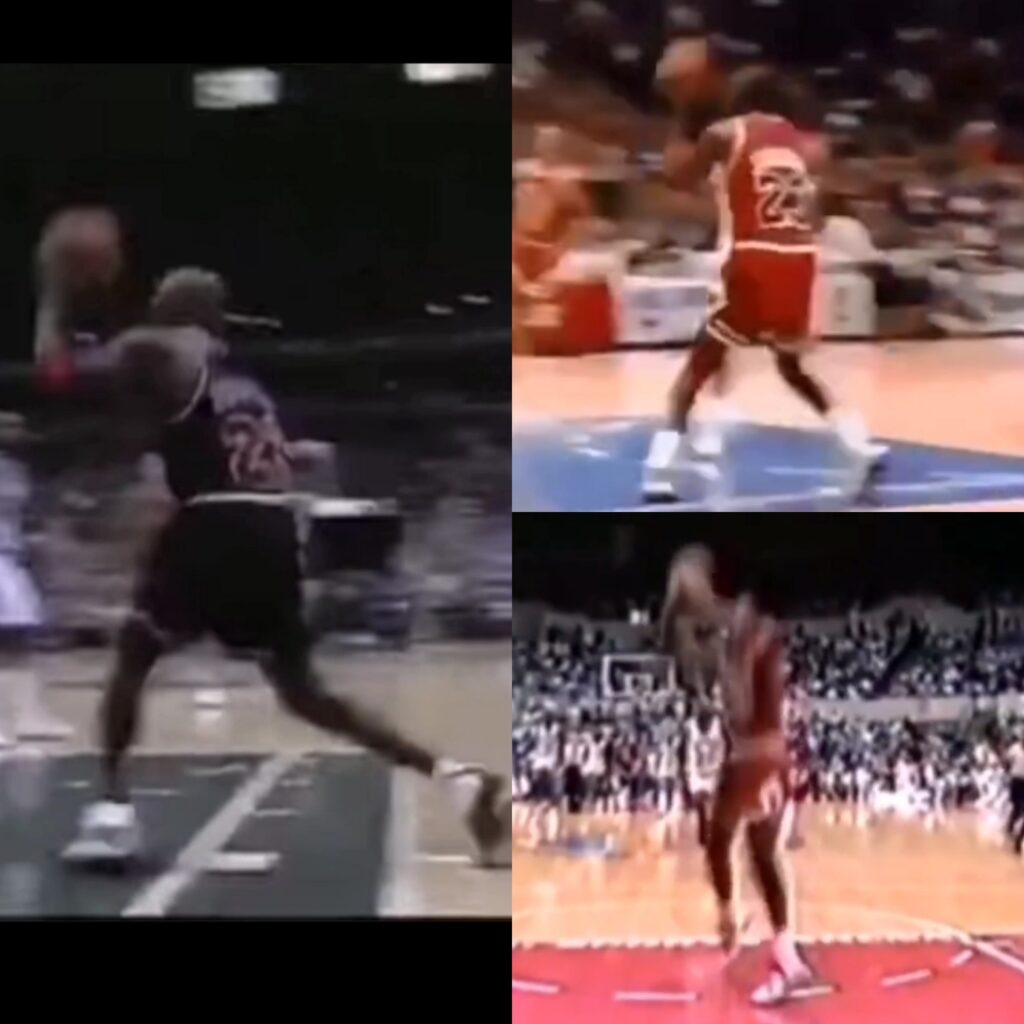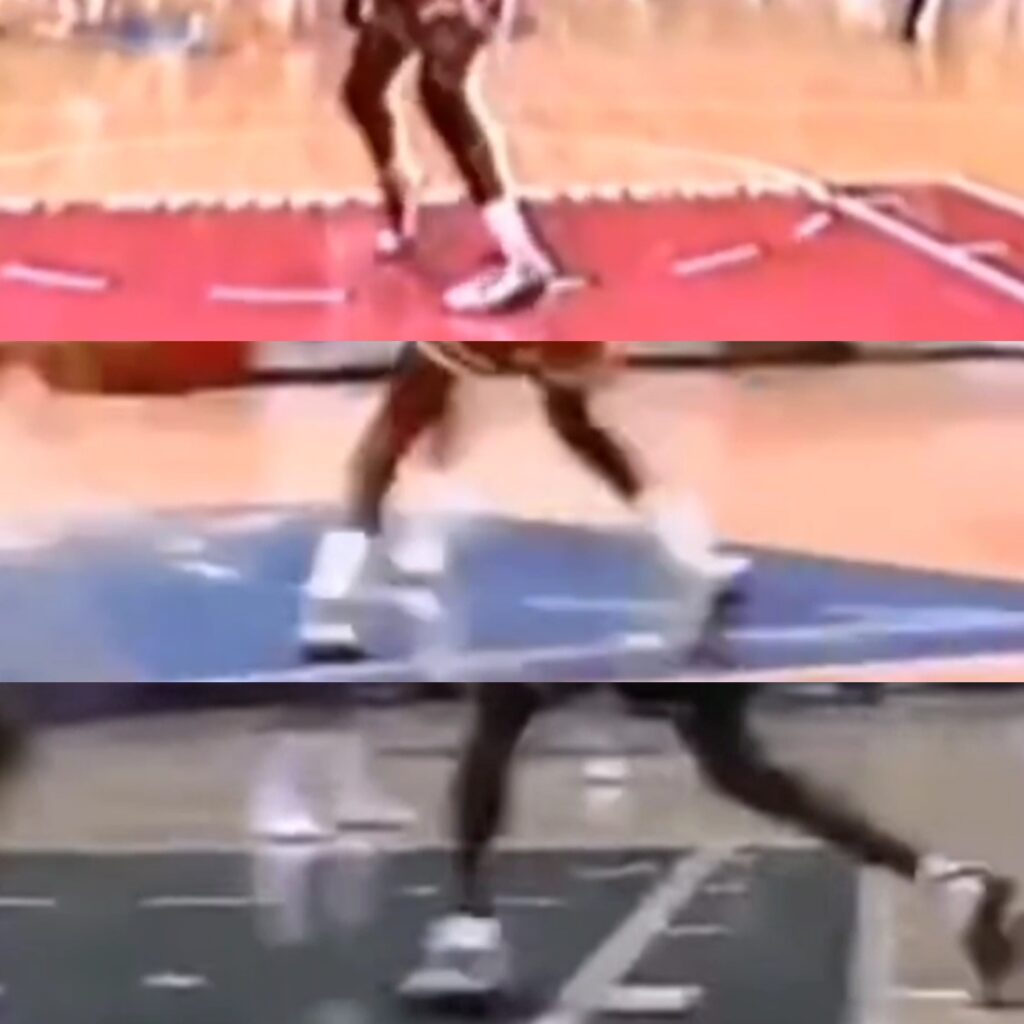Michael Jordan is a very high level athlete and was exceptionally injury resistant during his playing career. His movement mechanics have a large part to play in both his basketball excellence and lack of injury. Look for commonalities in his footwork during the execution of similar dunks in the three videos below.
Jordan repeatedly utilizes the same mechanics on side-leaning, two foot jumps. He uses the right leg to slow momentum as he approaches the basket. He maintains the ankle in supination and does not let his arch collapse. Next, he maintains a bow-legged (genu varum) positioning with front (left) leg with outside edge foot pressure.
The rear (right) leg quickly internally rotates at the hip and the knee flexes just before takeoff with the heel off of the ground. The shoulder, hips, and spine are all working in unison to drive the direction of the jump and create lift simultaneously.


The video below is one example of a barbell exercise to practice the injury resilient movement mechanics that closely mimic the rotational setup position displayed by MJ in this blog.
The trainee uses the spine, shoulders, and hips in directional unison to produce the rotational movement. Similar to MJ during his approach before takeoff, the torso rotates towards the bowed leg, he intentionally avoids inside edge foot pressure and ankle pronation, and the knees and feet arches do not collapse. The exercise can be performed without weight or with dumbbells as well.
